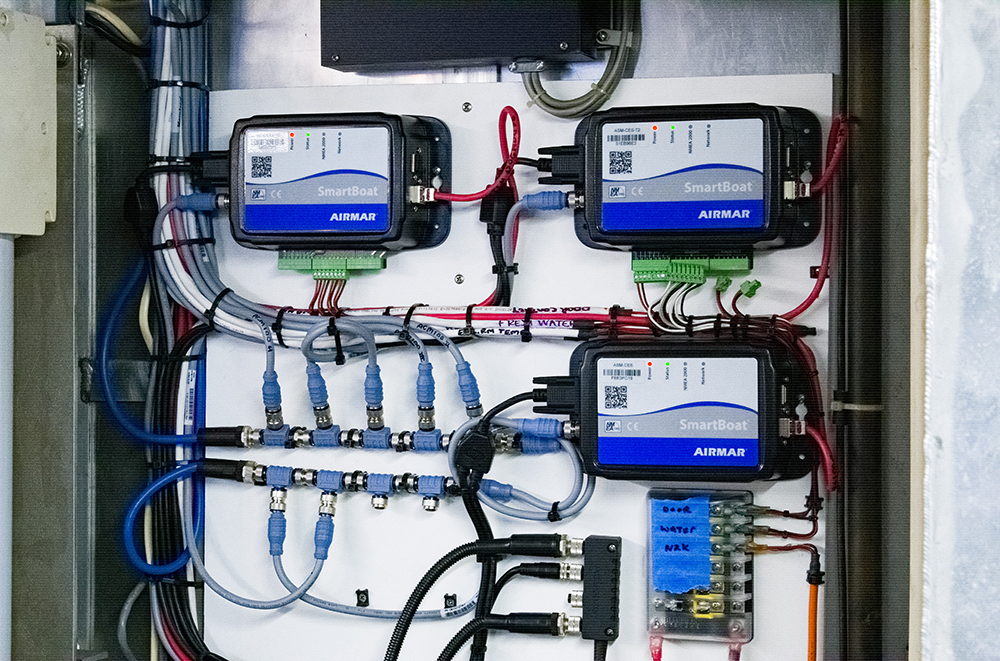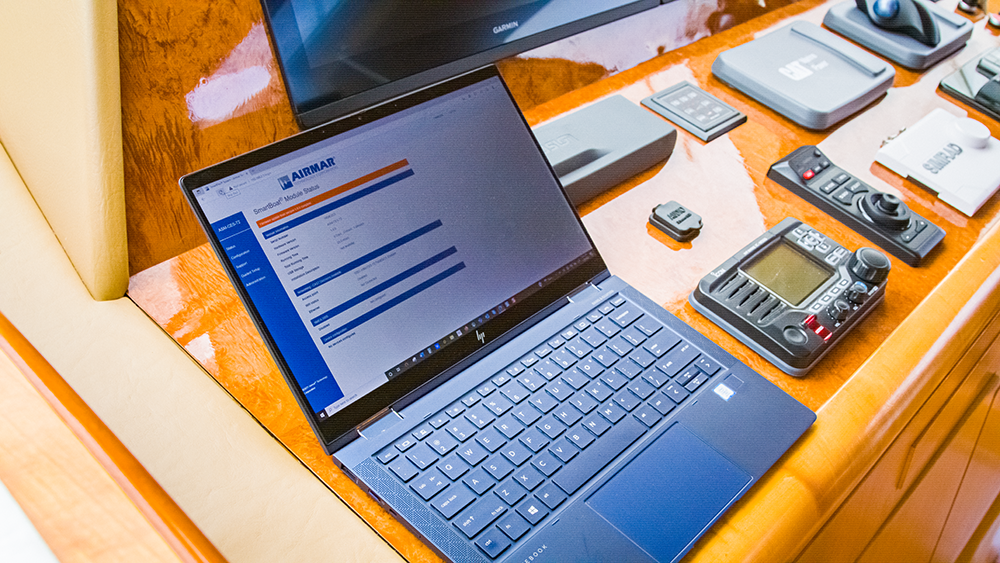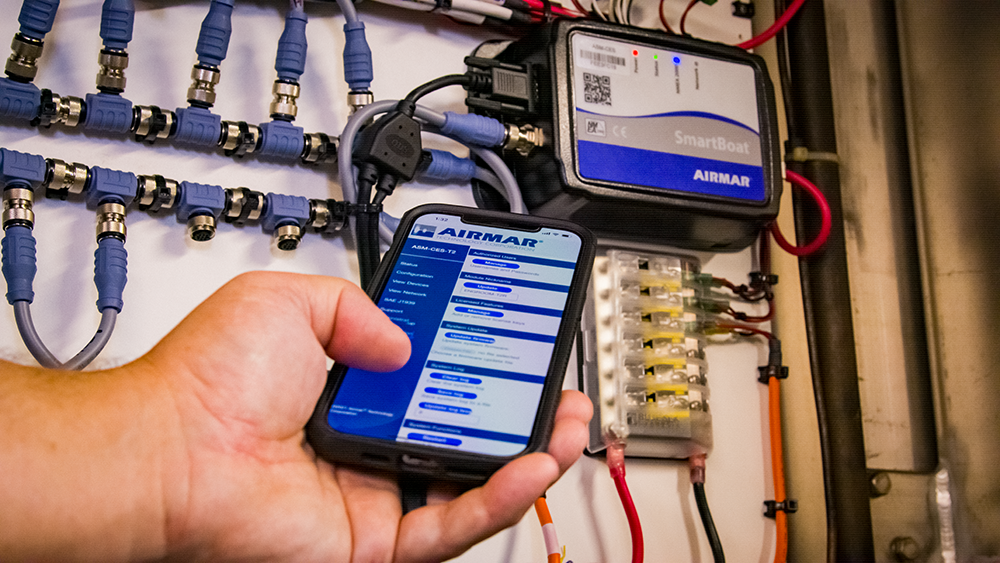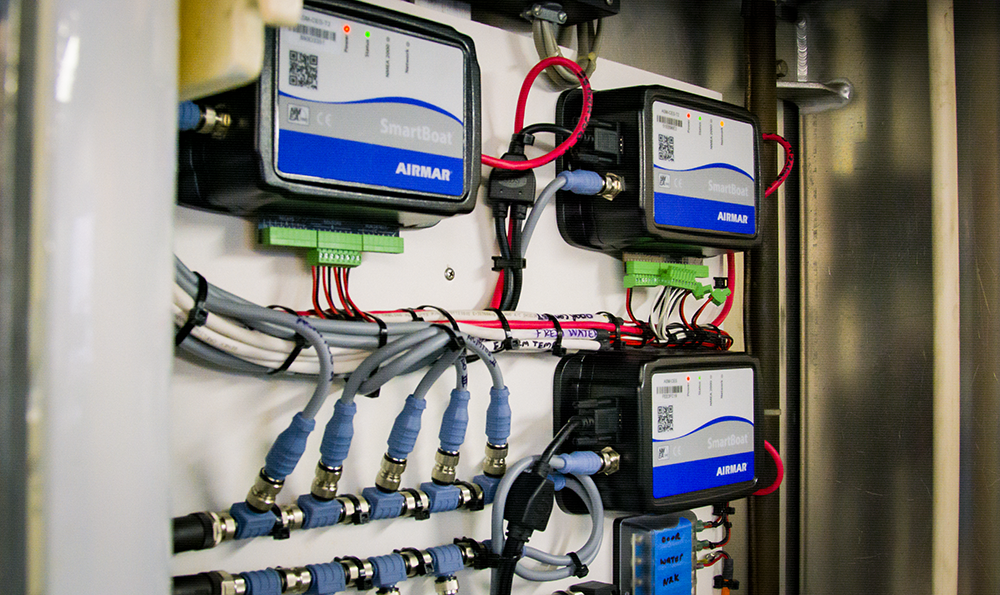Upgrading onboard electronics: Blending existing sensors the 'smart' way

The prospect of upgrading your vessel’s aging electronics to take advantage of the conveniences and safety features of today’s modern monitoring systems is often cut short by a realization of the project’s enormity.
Existing systems were often designed around an array of fluid, temperature, and pressure sensors throughout the vessel, installed specifically to function with that system. Most new monitoring systems are now designed around an exclusive and often proprietary array of sensors, so replacing any of those existing sensors with brand new sensors could be an incredibly disruptive and costly task in itself. Add to that the cost of the new data processors, proprietary interconnect cables and the specialized labor required to install and program these systems, and suddenly an already daunting project has become one that is seemingly out of reach.
The icing on the cake is that the proprietary communication language many systems operate with only allows for the integration of the systems own expensive display options.
Installing a semi-custom system designed for a “vessel like yours” is another option, but the costs and complexity can quickly spiral out of control. You will likely be forced to purchase far more capability than your application requires due to the system being designed for “everyone,” rather than being designed strategically for your vessel’s specific needs.
A new alternative
A groundbreaking new alternative to traditional upgrade options, Airmar’s SmartBoat® system delivers a very different, far more efficient upgrade experience. Compatible with a broad range of marine sensor types (thermistors, thermocouples, resistive senders, current loops, etc.), the SmartBoat system can be programmed to take full advantage of each existing sensors’ unique capabilities. Sensors already installed on a vessel connect directly to a SmartBoat module where the data is converted to NMEA2000 and delivered to the helm and a multifunction display. Uniquely designed to connect, control, and communicate sensor data across multiple networks, regardless of sensor output protocols and peripheral types, sensor reporting can be configured to meet specific needs or desired actions based on the sensor-state.

Advantages over current sensor setup
The infinite number of challenges that can be addressed and resolved thanks to maritime monitoring systems powered by sensor data is widely understood. These systems can capture nearly any type of sensor-sourced data, from engine output levels and drive shaft temperatures to oil pressure, tank levels and other conditions that can be undetectable without having dedicated displays at the helm. As onboard networks and displays have become more advanced, it has been increasingly difficult to include older analog sensors in newer systems without increasing the cost. Current solutions require expensive translation modules and proprietary cabling for each sensor onboard, whereas the flexible SmartBoat system can be implemented across any installation scenario, including those with multiple network types (NMEA0182, NMEA2000, J1939, Ethernet) and sensor protocols.
The opportunities SmartBoat systems open for retrofits and updates on working vessels are huge. The essential benefit of the SmartBoat system is how it uses current, onboard sensors or new generic, non-proprietary sensors by converting their protocols to NMEA2000 and seamlessly “upgrading” them to the new system without expensive sensor conversion interfaces. Typically, vessel operators aren’t able to replace all the sensors on a vessel, making the SmartBoat system a great path if the decision is made to begin an upgrade with just the helm and the network backbone, then upgrading to new sensors over time. It offers the flexibility to grow as more sensors are added.
“Ultimately, the SmartBoat system is designed to be an upgrade without displacing existing sensors,” said Craig Cushman, director of marketing at Airmar Technology. “Oftentimes, it’s difficult for vessel operators to move away from what’s already been set up on a single vessel or fleet, but now we’re able to connect, control and communicate all of the data from the existing installed sensors onto the NMEA2000 network, and ultimately to the MFDs at the helm. Case in point is the SmartBoat system’s ability to convert J1939 to NMEA2000 for engine visibility on MFDs rather than expensive, engine-specific LCD displays. Accessing data from long-isolated sensors on MFDs can alone be a game-changer, but the full spectrum of options and opportunities enabled once these connections have been made are tremendous.”
“Anyone doing retrofits can get the SmartBoat system up and running without trouble,” Cushman told Workboat.com. “It’s just a matter of wiring established sensors direct to SmartBoat modules. Once connected, the sensor is identified, and the protocol is converted to NMEA2000. The sensors’ PGN output to the network can be configured through easy-to-use menus in SmartBoat modules’ built-in, browser-based software, making the configuration of sensors and networks incredibly easy.”
This browser-based interface is called SmartFlex View. It uses intuitive, menu-driven guidance for the SmartBoat system’s setup, and it controls all its connected devices and sensors. Once connected, alerts can be defined based on user needs, such as event duration (alarm when bilge pump runs over a set period), or an action can be automated if a certain event happens (transfer pumps actuated after one tank hits a defined level). In many cases users can even correct for non-linear sender outputs, such as those often found in uniquely shaped fluid tanks.

Preventative action
SmartBoat system’s highly configurable alerting system allows operators to easily set up alerts that provide both insight and the ability to automate certain processes and actions. That proactive level of activity demonstrates another powerful advantage the SmartBoat system has over the passive sensor systems many vessel operators rely on. Every bit of system data can be measured and compared to easily produce custom monitoring and alerting schemes that are important to each individual operator. For example, a 5-psi oil pressure alert may be sufficient at idle, but at wide open throttle, you might want to be alerted before it drops to 20 psi. In fact, you might feel even more comfortable with 3 different levels of oil pressure warnings, dynamically tied to the varying engine RPM ranges you operate in. Maybe you want an early warning when the system notices your bilge pumps are operating more frequently, or at a longer duration than usual. These are just a few examples of alert options the system presents to operators, any of which can be explored and customized as needed.
Once sensors are configured, users can program automatic actions dictated by sensor status. Defining “do X when Y happens” is a simple setup and command within the SmartFlex system, and automatic alerts can be added as part of the process. This type of proactive, preventative action is a major advancement over what existing sensor systems provide.
“A lot of the sensor data received right now is about conditional updates and situational awareness,” Cushman continued. “That is all important information, but by taking sensor management to the next level, we can provide vessel operators the ability to automate crucial preventative actions that deliver immeasurable safety and efficiency to a vessel.”
Click here to learn more about the SmartBoat® system from Airmar





